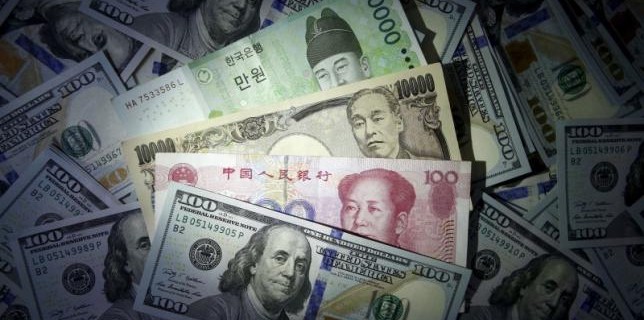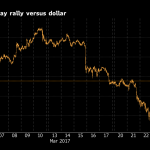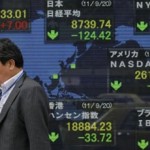The dollar climbed 0.4 percent to 112.78 yen

-
Output pact under threat as day of Vienna meeting dawns
-
Greenback climbs with Treasuries premium at nine-year high
Oil held below $46 a barrel ahead of a make-or-break OPEC meeting on stabilizing the crude market, while the dollar headed for its steepest monthly advance since May as U.S. yields rose.
Crude bounced off a two-week low reached Tuesday, when 10 hours of talks failed to resolve differences between oil-producing nations ahead of Wednesday’s formal meeting in Vienna. Treasuries fell, sending up yields that have already reached the highest relative to global peers since 2007. That spurred gains in the greenback, which is headed for the biggest one-month advance versus the yen since 2009. Equities advanced in Singapore — poised for their longest stretch of gains since 2014 — and in South Korea. Industrial metals extended declines, retreating for a second session after the London Metal Exchange Index reached the highest since May 2015 on Monday.

“The oil market is unlikely to be impressed by any token, face-saving agreement from OPEC,” said Ric Spooner, chief market analyst in Sydney at CMC Markets. “The substantial increase in OPEC production over recent months will leave the market in a surplus position for some time unless it can agree on significant production cuts. Momentum continues to fade in a wide range of markets, including stocks, bonds, currencies and base metals”
With the market giving just 30 percent odds to an agreement to end the oil supply glut, according to Goldman Sachs Group Inc., pessimism regarding the OPEC talks is helping quell a commodities rally sparked by Donald Trump’s surprise presidential victory. Investors are retreating from some of November’s standout trades as the month comes to a close, with the dollar faltering near a decade high that had been reached as Trump’s win fueled bets on higher interest rates. The monthly U.S. payrolls report is due Friday, after data Tuesday showed growth last quarter beat forecasts.
Commodities
- WTI crude futures added 0.6 percent to $45.52 a barrel as of 6:08 a.m. in London, paring back from Tuesday’s 3.9 percent tumble to trim their November decline to 2.9 percent; Brent crude rose 1 percent to $46.85 a barrel; it’s down 3 percent this month.
- Iran has vowed not to cut output, while Saudi Arabia said it is ready to reject an agreement unless all OPEC members — excluding Libya and Nigeria — take part, people familiar with the kingdom’s position said.
- Tin and nickel each slumped at least 0.7 percent, while zinc rebounded 0.9 percent. The London Metal Exchange Index tumbled 3.4 percent on Tuesday, its biggest one-day retreat in more than a year.
- Gold for immediate delivery gained 0.1 percent to $1,189.10 an ounce; it’s down 6.9 percent since Oct. 31, poised for its worst month since June 2013.
Stocks
- The MSCI Asia Pacific Index added 0.3 percent as Singapore’s benchmark gauge climbed for a seventh day, rising 0.8 percent.
- Shares in telecommunications service providers were the biggest gainers in the region, rising 1.1 percent as a group, followed by technology equities, while materials companies slid 1 percent.
- Australia’s S&P/ASX 200 Index fell 0.3 percent, with sub-gauges of raw materials producers and energy stocks down at least 1.9 percent.
- Futures on the S&P 500 Index were unchanged, after the underlying benchmark rose 0.1 percent to 2,204.66 on Tuesday.
Currencies
- Bloomberg’s dollar gauge, which tracks the greenback against 10 major peers, climbed 0.1 percent; it has risen 3.5 percent since Nov. 24 and hit a decade high last week.
- The kiwi and the renminbi each rose 0.2 percent, paring their declines in the month.
- One-month forwards on Russia’s ruble retreated 0.3 percent.
- The dollar climbed 0.4 percent to 112.78 yen, adding to Tuesday’s 0.4 percent increase.
Bonds
- The 10-year U.S. Treasury yield rose one basis point to 2.3 percent; the gap between yields on the Bloomberg Barclays U.S. Treasury Total Return index and those on global bonds climbed to 84 basis points last week, the most since 2007.
- Australian 10-year yields advanced 2 basis points to 2.72 percent, while rates for similar-dated New Zealand debt jumped 4 basis points to 3.13 percent.
- Japanese yields were unchanged at 0.015 percent, while South Korean rates declined one basis point to 2.13 percent.
Source: Bloomberg





























